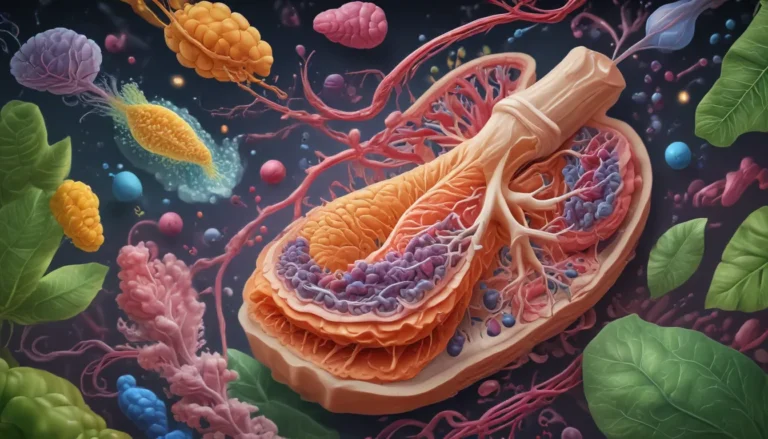A Note About Images: The images used in our articles are for illustration purposes only and may not exactly match the content. They are meant to engage readers, but the text should be relied upon for accurate information.
Welcome to the captivating world of plant diseases, where nature’s delicate balance is challenged by tiny invaders. From the impact on crops to the role in global pandemics, plant diseases play a significant role in shaping our environment. In this article, we will explore 19 surprising facts that shed light on the intricate relationship between plants and the pathogens that threaten them. Whether you are a seasoned gardener, a biology enthusiast, or simply intrigued by the wonders of nature, these facts will deepen your understanding of plant health and disease management. Join us on this journey as we uncover the hidden secrets of plant diseases!
Plant Diseases Demystified: Understanding the Basics
- Plant diseases are caused by various pathogens such as bacteria, viruses, fungi, and nematodes.
- Over 100,000 known species of plant pathogens exist, each capable of disrupting plant functions.
- Plant diseases can lead to massive crop losses, impacting food security and economic stability.
Plant diseases manifest through visible changes in plant appearance, such as wilting, discoloration, spots, or stunted growth. Managing plant diseases requires cultural practices like crop rotation, sanitation, and disease-resistant plant varieties. Genetic engineering offers a promising solution for creating disease-resistant plants.
The Impact of Plant Diseases on Agriculture and Natural Ecosystems
- Plant diseases can spread through various means, including soil, seeds, insects, and air.
- Some plant diseases can be transmitted to humans, affecting both agriculture and public health.
- Climate change can influence the spread of plant diseases, altering environmental conditions for pathogens.
Diagnosing plant diseases through laboratory testing and implementing quarantine measures are crucial for disease management. Certain plant diseases have significant economic impacts, while others affect ornamental plants and wildlife. The evolution of plant diseases poses challenges for control methods, requiring ongoing research and innovation.
Delving Deeper: Exploring the Complexity of Plant Diseases
- Plant diseases can have historical significance, shaping human history and societal impacts.
- Disease-resistant plants and biological control agents are used to combat invasive species and promote plant health.
- Plant diseases can affect global carbon sequestration, impacting the climate change mitigation efforts.
Plant diseases highlight the need for sustainable agricultural practices and innovative solutions to protect crops and ensure food security. Early detection and prevention play a crucial role in minimizing damage and controlling disease spread. Ongoing efforts are being made worldwide to combat plant diseases through research and strategic interventions.
Conclusion: Embracing the Intriguing World of Plant Diseases
In conclusion, the world of plant diseases is rich with surprises and insights. From the historical relevance to the evolving nature of pathogens, there is much to learn about this complex relationship. Understanding plant diseases is essential for safeguarding crops, preserving biodiversity, and ensuring global food security. As researchers continue to unravel the mysteries of plant health, innovative solutions will emerge to combat emerging diseases and promote sustainable agriculture practices. Join us in exploring the fascinating world of plant diseases and the vital role they play in our ecosystem.
FAQs: Answering Your Burning Questions About Plant Diseases
- What are some common plant diseases?
- Powdery mildew, rust, leaf spot, blight, and root rot are common plant diseases.
- How do plant diseases spread?
- Plant diseases can spread through wind, water, insects, contaminated tools, and infected plant material.
- Can plant diseases be prevented?
- Yes, proper sanitation, crop rotation, disease-resistant varieties, and timely treatments can help prevent plant diseases.
- How do plant diseases impact crop yields?
- Plant diseases can reduce crop yields through leaf damage, fruit rot, stunted growth, and plant death, leading to economic losses.
- Are there natural methods to control plant diseases?
- Beneficial insects, biological control, soil health improvement, and proper irrigation can help control plant diseases naturally.
- Can humans get sick from plant diseases?
- While rare, some plant pathogens can cause foodborne illnesses if contaminated produce is consumed.
- How does climate change affect plant diseases?
- Climate change can alter environmental conditions favoring pathogen growth, impacting disease prevalence and distribution.
- Are efforts underway to combat plant diseases?
- Researchers worldwide are developing strategies for disease management, including resistant varieties and sustainable farming practices.
- Can genetic engineering help prevent plant diseases?
- Genetic engineering can create disease-resistant crops by introducing specific genes, though environmental concerns exist.
- Why is early detection of plant diseases important?
- Early detection allows for prompt intervention and effective control measures, minimizing damage and disease spread.
Plant diseases offer a wealth of knowledge and insights for those curious about the intricate world of plant pathology. Stay informed, stay engaged, and explore the wonders of plant diseases with us.
Your Feedback Matters!
We are committed to delivering accurate and engaging content, thanks to the contributions of users like you. Trust in our dedication to quality and authenticity as we navigate the world of plant diseases together. Join us on this journey of discovery and learning as we uncover the hidden secrets of plant health and disease management.






